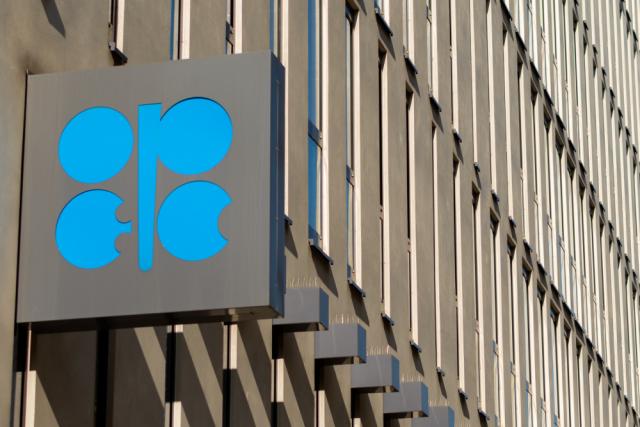
The U.S. had pushed OPEC not to proceed with the cuts, arguing that fundamentals don't support them, a source familiar with the matter said. Pictured is OPEC headquarters in Vienna. (Source: LukeOnTheRoad / Shutterstock.com)
OPEC+ agreed to its deepest cuts to oil production since the 2020 COVID pandemic at a Vienna meeting on Oct. 5, curbing supply in an already tight market despite pressure from the U.S. and others to pump more.
The cut could spur a recovery in oil prices that have dropped to about $90 from $120 three months ago on fears of a global economic recession, rising U.S. interest rates and a stronger dollar.
The U.S. had pushed OPEC not to proceed with the cuts, arguing that fundamentals don't support them, a source familiar with the matter said.
Sources said it remained unclear if cuts could include additional voluntary reductions by members such as Saudi Arabia, or if they could include existing under-production by the group.
OPEC+ fell about 3.6 million bbl/d short of its output target in August.
“Higher oil prices, if driven by sizeable production cuts, would likely irritate the Biden Administration ahead of U.S. mid-term elections,” Citi analysts said in a note.
“There could be further political reactions from the U.S., including additional releases of strategic stocks, along with some wildcards including further fostering of a NOPEC bill,” Citi said, referring to a U.S. antitrust bill against OPEC.
JPMorgan also said it expected Washington to put in place countermeasures by releasing more oil stocks.
Oil Prices Rise
Saudi Arabia and other members of OPEC+—which groups OPEC and other producers including Russia—have said they seek to prevent volatility rather than to target a particular oil price.
Benchmark Brent crude rose towards $93/bbl on Oct. 5, after climbing on Oct. 4.
The West has accused Russia of weaponizing energy, creating a crisis in Europe that could trigger gas and power rationing this winter.
Moscow accuses the West of weaponizing the dollar and financial systems such as SWIFT in retaliation for Russia sending troops into Ukraine in February.
The West accuses Moscow of invading Ukraine, while Russia calls its actions a special military operation.
Part of the reason Washington wants lower oil prices is to deprive Moscow of oil revenue, while Saudi Arabia has not condemned Moscow’s actions.
Relations have been strained between the kingdom and the administration of Biden, who travelled to Riyadh this year but failed to secure any firm cooperation commitments on energy.
“The decision is technical, not political,” United Arab Emirates Energy Minister Suhail al-Mazroui told reporters ahead of the meeting.
“We will not use it as a political organization,” he said, adding that concerns about a global recession would be one of the key topics.
Russian Deputy Prime Minister Alexander Novak, who was put on the U.S. special designated nationals sanctions list last week, also travelled to Vienna to participate in meetings. Novak is not under EU sanctions.
Recommended Reading
What's Affecting Oil Prices This Week? (March 10, 2025)
2025-03-10 - Prices were weighed down by concerns about economic growth, in part, because of more tariffs being imposed by the Trump administration, and OPEC+ reiterating that its production cuts would start unwinding in April.
What's Affecting Oil Prices This Week? (March 3, 2025)
2025-03-03 - For the upcoming week, Stratas Advisors expects oil prices to continue bouncing around but overall trend upward.
Oil Dives More Than 6%, Steepest Fall in 3 Years on Tariffs, OPEC+ Supply Boost
2025-04-03 - Oil prices swooned on April 3 to settle with their steepest percentage loss since 2022, after OPEC+ agreed to a surprise increase in output the day after U.S. President Donald Trump announced sweeping new import tariffs.
What's Affecting Oil Prices This Week? (March 31, 2025)
2025-03-31 - For the upcoming week, Stratas Advisors predict that the price of Brent crude will move sideways and struggle amid concerns and uncertainties about the impact of the tariffs imposed by the Trump Administration.
What's Affecting Oil Prices This Week? (Feb. 10, 2025)
2025-02-10 - President Trump calls for members of OPEC+ and U.S. shale producers to supply more oil to push down oil prices to the neighborhood of $45/bbl.
Comments
Add new comment
This conversation is moderated according to Hart Energy community rules. Please read the rules before joining the discussion. If you’re experiencing any technical problems, please contact our customer care team.




